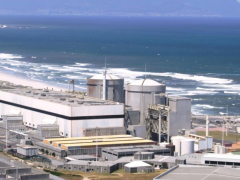Eskom’s Research, Testing and Development (RT&D) division has completed a detailed investigation into the identification of hydrotreated insulating transformer oils and the replenishment of depleted oxidation inhibitors, confirming laboratory capability and the continued relevance of in-service re-inhibition practices.
The study, presented by Kateko Mathe, Chemical Technician at the Eskom Research and Innovation Centre, during the 2025 CIGRE Southern Africa Regional Conference in Pretoria from October 14-17, examined how modern hydrotreating processes have changed oil characteristics and additive behaviour in service. Suppliers of hydrotreated oils have claimed that multi-component inhibitor formulations render routine inhibitor replenishment obsolete. Eskom’s research sought to verify these claims through literature review, laboratory analysis and simulated ageing.
Hydrotreated oils can be identified by fingerprinting
Using comprehensive two-dimensional gas chromatography coupled with time-of-flight mass spectrometry (GC×GC-TOFMS), the laboratory demonstrated clear differentiation of hydrotreated oils from other products. Chromatograms generated in 1D, 2D and 3D – based on total-ion spectra – allowed the fingerprinting of unique product components and additives, including DBPC (also known as BHT), DTBP and tetralin.
No additional undeclared additives linked specifically to hydrotreating could be definitively confirmed although the laboratory noted that proprietary formulations may exist beyond current detection capabilities.
Inhibitor depletion remains a concern
Mathe reported that DBPC depletion in service remains evident with critical levels typically reached around 12 years after commissioning. The study confirmed that mineral insulating oils continue to undergo oxidative degradation and that an inhibitor concentration below 0,1% by weight is considered unacceptable. Re-inhibition to approximately 0,4% remains the recommended operational response.
Ageing simulations in the laboratory – performed at 130°C over periods of up to eight weeks – showed clear degradation in uninhibited oils compared to inhibited samples, which is consistent with known ageing behaviour.
Replenishment is effective and does not cause abnormal behaviour
The research team aged uninhibited and inhibited oils, tracked inhibitor depletion and then re-dosed selected samples back to approximately 0,4% inhibitor concentration. The replenished oils were aged again for up to four additional weeks.
According to Mathe, no gelling, abnormal depositing or other adverse effects were observed during or after replenishment. Quality assurance tests, including RPVOT, IFT, tan delta, colour and acid measurements, showed slight improvement in oxidation stability after inhibitor addition with inhibited samples consistently outperforming uninhibited oils.
Mathe concluded that current laboratory test suites are capable of monitoring inhibitor levels, detecting known additives, simulating depletion and confirming successful replenishment.













